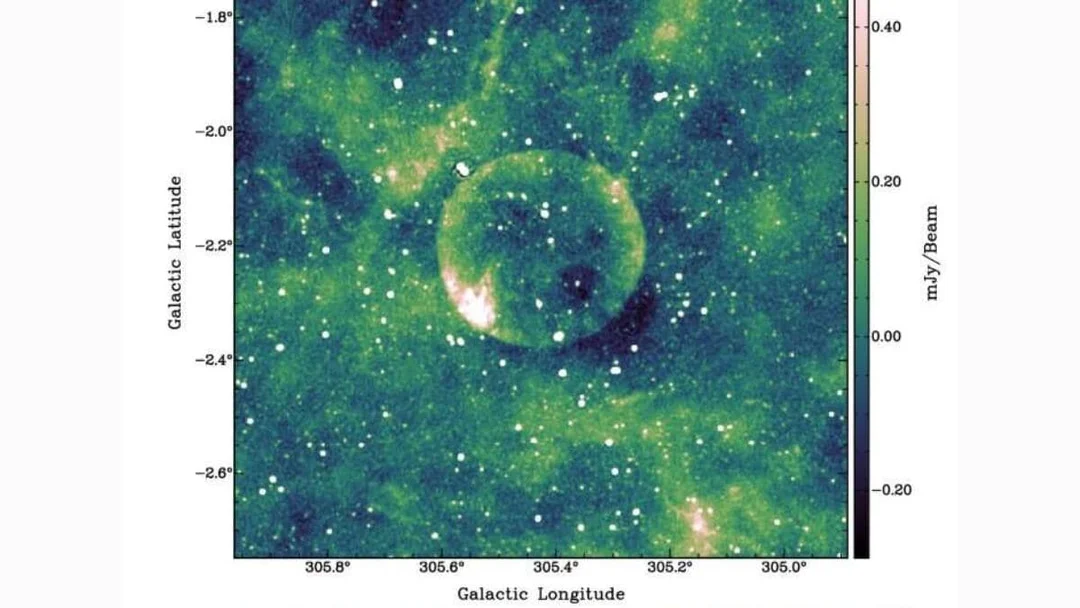
‘Teleios’: Astronomers Baffled by Perfectly Spherical Supernova Remnant
In a cosmic mystery that has astronomers scratching their heads, a nearly perfect sphere has been discovered within our Milky Way galaxy. Dubbed Teleios, meaning "perfection" in ancient Greek, this object is challenging existing understandings of supernova remnants. What makes this discovery so significant, and why is it sparking debate among astrophysicists?

A team led by astrophysicist Miroslav Filipović from Western Sydney University in Australia made the astonishing discovery using the Australian Square Kilometre Array Pathfinder (ASKAP). The findings, submitted to the Publications of the Astronomical Society of Australia and available on arXiv, detail the analysis of Teleios, a seemingly flawless bubble radiating faint radio waves.
Why is Teleios so perplexing? Supernova remnants are typically asymmetrical, shaped by uneven explosions or interactions with interstellar matter. Teleios, however, demonstrates an almost unprecedented level of symmetry. "We have made an exhaustive exploration of the possible evolutionary state of the supernova based on its surface brightness, apparent size and possible distances," the researchers stated, emphasizing the thoroughness of their investigation.

One of the main challenges in understanding Teleios is determining its distance. Current estimates place it at either 7,175 or 25,114 light-years away. This discrepancy significantly impacts the estimated size of the remnant. At the closer range, it would be approximately 46 light-years across, suggesting a younger age of less than 1,000 years. At the further distance, it would measure a staggering 157 light-years in diameter, indicating an age exceeding 10,000 years. As the article from phys.org notes, such precision in shape is seen in very few remnants, like “SNR J0624–6948, SN1987A, or MC SNR J0509–6731.”
Adding to the mystery is the unexpected absence of X-ray emissions. Current models of Type Ia supernovae predict substantial X-ray production due to shockwaves. Yet, Teleios defies expectations, emitting only faint radio waves. This anomaly raises questions about the explosion mechanism or the remnant’s unique physical state.

The researchers proposed various scenarios, including the possibility of Teleios being the remnant of a Type Iax supernova, which leaves behind a "zombie" star. However, this would require Teleios to be much closer, around 3,262 light-years away, a scenario not supported by other measurements.
"All possible scenarios have their challenges, especially considering the lack of X-ray emission that is expected to be detectable given our evolutionary modelling," the team admitted. Further high-resolution, multi-frequency observations are needed to unravel the true nature of this cosmic anomaly. The interaction with the interstellar medium (ISM) structures requires more analysis, as noted by the arXiv paper.
The discovery of Teleios serves as a humbling reminder of the vastness and complexity of the universe. What could explain the perfect symmetry and missing X-rays? Could Teleios represent a previously unknown type of supernova remnant? Share your thoughts and theories in the comments below!